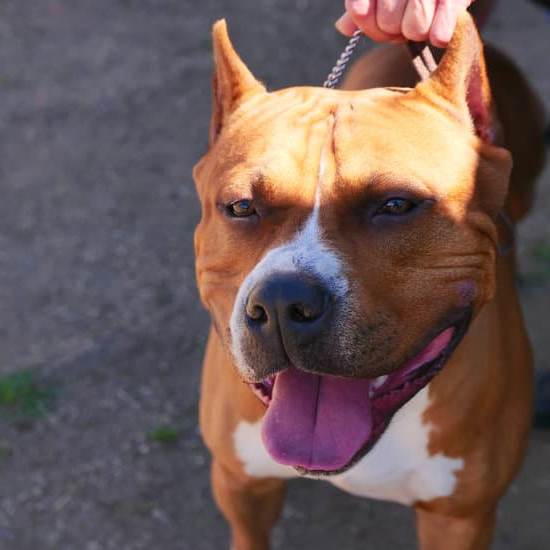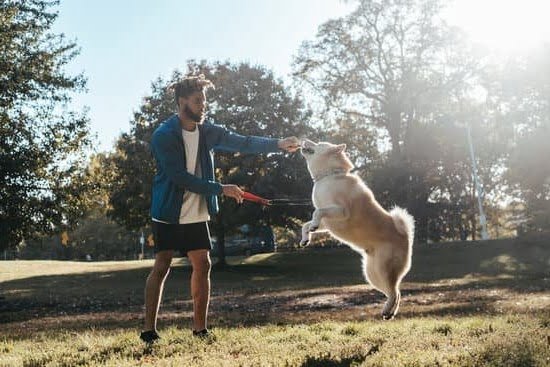House training is a crucial step in helping shelter dogs adjust to their new homes and ensuring their successful adoption. Unlike puppies or dogs from breeders who may have had some basic training, shelter dogs often come with unique challenges when it comes to house training. Understanding these challenges and providing the necessary support can make all the difference in helping these dogs become well-adjusted family members.
When it comes to house training, shelter dogs may face additional difficulties compared to their counterparts from breeders. Many shelter dogs come from uncertain backgrounds and may have experienced trauma, neglect, or inconsistent living conditions. These factors can play a significant role in a dog’s ability to adapt to domestic routines and learn appropriate bathroom habits. As a result, patience, understanding, and consistent training become paramount in helping these dogs overcome their house training obstacles.
Before bringing home a new shelter dog, it’s essential to prepare your home for their arrival. Creating a safe and comfortable environment will help ease the transition and set them up for success in terms of house training. This includes designating specific areas where they are allowed to relieve themselves and establishing consistent routines that align with their natural instincts. By providing structure from the beginning, you’ll help your shelter dog feel secure while also reinforcing appropriate behavior.
In the following sections of this article, we will delve deeper into the unique challenges faced when house training a shelter dog.
We will explore the impact of previous living conditions on their progress, discuss tips for preparing your home for their arrival, share strategies for establishing consistent rules and schedules, offer positive reinforcement techniques for effective training, provide insights on dealing with accidents, address common challenges that may arise along the way, and guide you on when it might be necessary to consult a professional trainer.
With patience and persistence, successfully house training your shelter dog can lead to an unbreakable bond between you and your furry companion.
Understanding the Unique Challenges of House Training a Shelter Dog
While house training a dog can be a challenge in itself, the task becomes particularly unique and challenging when dealing with shelter dogs. Understanding the unique challenges that come with house training a shelter dog is crucial for prospective adopters to ensure a smooth transition into their new homes.
Potential Reasons behind House Training Issues
There are several potential reasons why shelter dogs may have difficulties with house training. One possible reason is their previous living conditions. Many shelter dogs have spent most, if not all, of their lives in environments where they did not have consistent access to appropriate bathroom areas or were confined to small or unsanitary spaces. As a result, they may lack the basic understanding of where and when it is appropriate to relieve themselves.
Additionally, trauma or neglect experienced by shelter dogs before entering the shelter can also contribute to house training issues. Dogs who have suffered abuse or neglect may have developed coping mechanisms such as eliminating indoors out of fear or anxiety. It is important for adopters to approach house training with compassion and patience, understanding that these dogs may require extra time and effort to overcome their past experiences.
Impact of Previous Living Conditions on House Training Progress
The previous living conditions of shelter dogs can have a significant impact on their house training progress. For example, if a dog has been kept in cramped quarters with limited access to appropriate bathroom areas, they may have associated any indoor space as an acceptable place to eliminate. This can lead to confusion and make it challenging for them to understand that only designated outdoor locations are appropriate.
Similarly, if a dog has experienced long periods without opportunities for regular elimination due to neglect or confinement, they may struggle with maintaining bladder control initially. It is important for adopters to be prepared for accidents during the early stages of house training and provide frequent opportunities for the dog to relieve themselves outside.
Understanding these unique challenges and factors impacting house training progress will enable adopters to approach the process with empathy and patience. By acknowledging the potential reasons behind a shelter dog’s house training issues and recognizing the impact of their previous living conditions, adopters can tailor their training methods to meet these specific needs and set their new furry friend up for success in their forever home.
Preparing Your Home for a New Shelter Dog
When bringing a new shelter dog into your home, it is crucial to create a safe, comfortable, and dog-friendly environment. This not only helps the dog adjust more easily but also sets the foundation for successful house training. Here are some tips on preparing your home for a new shelter dog:
- Dog-proof your home: Before the dog’s arrival, ensure that your home is free from any potential hazards or items that could be chewed on or swallowed. Secure loose cables, keep toxic substances out of reach, and remove any small objects that could pose a choking hazard.
- Create a designated space for the dog: Set up an area in your home where the dog can retreat to feel safe and secure. This can be a crate, a cozy bed, or even just a corner with blankets. Providing this space will help the dog feel more at ease during the transition period.
- Establish potty areas: Decide where you want your dog to go potty outside and establish that area early on. Introduce them to this spot as soon as you bring them home, allowing them to get familiar with the scent and surroundings. Consistency is key in forming good habits.
- Set up a routine: Dogs thrive on routine, so establish one right from the start. Maintain regular feeding times and take your dog out for bathroom breaks at consistent intervals throughout the day. Having a predictable schedule will make house training much easier for both you and your new shelter dog.
To ensure successful house training for your new shelter dog, it is important to have patience and consistency in implementing these preparations. Remember that each individual shelter dog may require different adjustments and accommodations based on their specific needs and past experiences.
| Tips |
|---|
| – Dog-proof your home |
| – Create a designated space for the dog |
| – Establish potty areas |
| – Set up a routine |
Establishing Consistent House Training Rules
Consistency is key when it comes to house training a shelter dog. Shelter dogs often come from uncertain backgrounds and may not have had the opportunity to develop consistent habits or routines. Establishing clear and consistent house training rules can help them adjust faster to their new environment and reduce accidents.
Step 1: Set a Feeding Schedule
One of the first steps in establishing consistent house training rules for your shelter dog is to set a feeding schedule. Regular mealtimes will help regulate your dog’s bathroom habits, making it easier to predict when they will need to go outside.
Divide their daily food portion into two or three meals, depending on their age and breed, and feed them at the same times each day. Avoid free-feeding, as this can make it more difficult to establish a potty routine.
Step 2: Establish Regular Potty Breaks
In addition to a feeding schedule, it’s important to establish regular potty breaks for your shelter dog. Take them outside first thing in the morning, after meals, before bedtime, and at other specific times throughout the day. Choose a designated potty area in your yard or near your home and use the same spot consistently. This will help familiarize your dog with where they are supposed to relieve themselves and reinforce good habits.
Step 3: Use Positive Reinforcement
Positive reinforcement plays a crucial role in establishing consistent house training rules for shelter dogs. When your dog eliminates in the appropriate spot, immediately praise them with enthusiasm, petting, or treats. This positive association will reinforce the desired behavior and motivate them to continue following the established routine. Remember to be patient and understanding during accidents – scolding or punishing your dog can lead to fear or confusion.
Step 4: Supervise and Reward Good Behavior
Supervision is essential during the house training process. Keep a close eye on your shelter dog, especially during the initial stages when accidents are more likely to occur. If you notice signs that your dog needs to go potty, such as restlessness or circling, take them outside right away. When they eliminate in the correct spot, reward them immediately. This will further reinforce their understanding of where and when it’s appropriate to potty.
Step 5: Consistency Is the Key
Consistency is crucial in establishing and maintaining consistent house training rules for shelter dogs. Stick to the established routine as much as possible, even on weekends or during busy periods. Consistent feeding schedules, regular potty breaks, and positive reinforcement will help your shelter dog understand what is expected of them and create good habits over time.
By following these steps and remaining patient and persistent throughout the process, you can successfully establish consistent house training rules for your shelter dog. Remember that every dog is different, so it’s important to adapt these strategies to suit your specific dog’s needs. With time, consistency, and positive reinforcement, you’ll be able to celebrate the success of a well-trained shelter dog who feels safe and secure in their new home.
Positive Reinforcement Techniques for House Training
House training a shelter dog can be a rewarding and successful process with the use of positive reinforcement techniques. Positive reinforcement involves rewarding desired behaviors to encourage their repetition, while ignoring or redirecting unwanted behaviors. This method is particularly effective for shelter dogs, as they may have experienced trauma or neglect in the past, making them more responsive to positive interactions.
One important aspect of positive reinforcement is identifying the specific rewards that motivate your shelter dog. Each dog may have different preferences, so it’s essential to experiment with various rewards such as treats, verbal praise, toys, or affection to determine what motivates them most. Consistently using these rewards when your dog exhibits appropriate potty behavior will reinforce that behavior and strengthen their house training progress.
A common technique for positive reinforcement in house training is the use of a clicker. A clicker is a small handheld device that makes a distinct sound when pressed. By associating the sound of the clicker with treats or praise, you can effectively communicate to your shelter dog that they have performed the desired behavior correctly. For example, when your dog eliminates outside in the designated spot, you can immediately click and reward them to reinforce this behavior.
It is important to note that positive reinforcement should always be used in conjunction with proper timing. Rewards should be given immediately after your dog exhibits the desired behavior so they can establish a clear connection between their action and the reward. Additionally, consistency is key when implementing positive reinforcement techniques. It is crucial to consistently reward your shelter dog for appropriate potty behavior every time to ensure they understand what you expect from them.
Using positive reinforcement techniques not only helps with house training success but also helps build trust and strengthen your bond with your shelter dog. It promotes a happy and comfortable environment during training sessions and encourages their willingness to learn and cooperate. By focusing on rewarding desired behaviors rather than punishing unwanted ones, you are setting the stage for a positive training experience and ultimately helping your shelter dog thrive in their new home.
| Positive Reinforcement Techniques | Description |
|---|---|
| Treats | Using small, easily consumable treats as a reward when the dog eliminates in the designated spot. |
| Verbal Praise | Giving enthusiastic verbal praise such as “Good job.” or “Well done.” immediately after the desired behavior is exhibited. |
| Toys | Offering a favorite toy or playtime as a reward to reinforce potty training progress. |
| Affection | Giving physical affection such as petting, belly rubs, or cuddles to show appreciation for correct potty behavior. |
| Clicker Training | Using a clicker to make a distinct sound when the dog eliminates in the appropriate spot, followed by an immediate reward. |
Dealing with Accidents
Accidents are an inevitable part of house training a shelter dog, especially in the beginning stages. It is important to handle accidents promptly and effectively to prevent repeat incidents and ensure a successful house training process. In this section, we will discuss strategies for cleaning up accidents and preventing future ones.
First and foremost, it is crucial to clean up accidents thoroughly to eliminate any lingering odors that may attract the dog back to the same spot. Start by blotting up as much of the urine or picking up solid waste as possible using paper towels or disposable gloves. Avoid rubbing or scrubbing, as this may spread the mess further into carpets or upholstery.
Once most of the waste has been removed, use an enzymatic cleaner specifically designed for pet stains and odors. Enzymatic cleaners break down the organic matter in urine or feces, effectively eliminating the odor source. Follow the instructions on the cleaner carefully, ensuring that it penetrates deep into the affected area.
In addition to thorough cleaning, it is essential to prevent repeat incidents by identifying patterns or triggers that may lead to accidents. Keep track of when and where accidents occur in a journal or notebook. Look for common factors such as specific times of day, locations in your home, or certain behaviors exhibited by your dog before having an accident.
Identifying these patterns can help you anticipate when your dog needs to go potty and proactively take them outside before an accident happens. Establishing a consistent routine for bathroom breaks is also crucial for preventing accidents. Take your shelter dog out on a regular schedule following meals, playtime, waking up from a nap, and before bedtime.
By promptly addressing accidents and taking proactive measures to prevent repeat incidents, you can successfully navigate through this challenging aspect of house training a shelter dog. Remember to be patient with your dog during this process – they are still adjusting to their new environment and may require some time to fully understand the rules of their new home.
Patience and Persistence
House training a shelter dog can be a challenging process, but with patience and persistence, it is possible to overcome the obstacles that may arise. It’s important to acknowledge that house training a shelter dog may not happen overnight and will require dedication and understanding from the owner. This section will discuss common challenges and setbacks that may occur during the house training process and offer practical solutions to overcome them.
One challenge that many owners face when house training a shelter dog is dealing with accidents. Accidents can be frustrating, but it’s crucial to remember that they are part of the learning process for the dog. When accidents happen, it’s essential to clean them up effectively to eliminate odors and prevent future incidents. Using enzymatic cleaners specifically designed for pet stains can help remove any lingering odors and discourage the dog from using the same spot again.
In addition to addressing accidents, it’s also important to observe and identify patterns or triggers that may lead to accidents in order to prevent them. Keep track of when accidents occur, noting factors such as time of day, location in the house, or specific behaviors exhibited by the dog beforehand.
By identifying these patterns, you can adjust your routine or make changes to your training approach accordingly. For example, if accidents tend to happen at a certain time of day, you can make sure to take your dog outside for potty breaks before that time.
Another challenge in house training a shelter dog is establishing consistency in their routine. Shelters often have unpredictable schedules, which may impact a dog’s ability to adapt quickly to new routines in their new home environment. It’s important for owners to establish consistent schedules for feeding, watering, and potty breaks. Creating a daily schedule will help your dog anticipate when it’s time for bathroom breaks and encourage them to hold their bladder until then.
Remember that every shelter dog is different and may require varying levels of patience and persistence during this process. Stay positive throughout the training journey and be prepared for setbacks.
If you find that you’re struggling to make progress or encountering difficulties beyond your expertise, don’t hesitate to seek the assistance of a professional dog trainer or behaviorist. They can provide personalized guidance and support to help address specific house training challenges and ensure the success of your shelter dog’s adoption journey.
Seeking Professional Help
While many shelter dogs can be successfully house trained with patience and persistence, there may come a time when professional help is needed. Consulting a trainer or behaviorist can provide valuable guidance and support in overcoming specific house training challenges. Here are some circumstances in which seeking professional assistance is beneficial:
- Persistent House Training Issues: If you have been diligently following all the recommended techniques and strategies for house training your shelter dog but are still experiencing persistent issues, it may be time to consult a professional. A trainer or behaviorist can assess the situation, identify any underlying factors contributing to the problem, and offer personalized training plans to address those issues.
- Aggression or Anxiety Towards Elimination: In some cases, shelter dogs may exhibit aggression or anxiety when it comes to elimination behaviors. This could manifest as guarding their designated potty area, refusing to eliminate outside, or displaying fear-related behaviors during elimination. A skilled behaviorist can help determine the cause of these behaviors and work on desensitization and counter-conditioning techniques.
- Regression or Reoccurring Accidents: It’s not uncommon for shelter dogs to experience setbacks in their house training progress or for accidents to occur occasionally even after successful training. However, if your dog consistently regresses in their potty habits or accidents become frequent despite your efforts, seeking guidance from a professional can help pinpoint any underlying issues and provide targeted solutions.
When consulting a trainer or behaviorist, make sure you choose someone experienced in working with shelter dogs and using positive reinforcement methods. Look for professionals who use force-free techniques that focus on building trust and confidence in your dog rather than punitive measures.
Remember that seeking professional help does not mean you have failed as an owner but rather demonstrates your commitment to providing the best possible care for your beloved shelter dog. With their expertise and guidance alongside your dedication, you can overcome any house training challenges and develop a strong bond with your furry companion.
Conclusion
In conclusion, house training a shelter dog may come with its unique set of challenges, but with patience and persistence, it can be a rewarding and fulfilling process. By understanding the importance of house training for shelter dogs and the potential reasons behind their house training issues, owners can better prepare their homes and establish consistent rules and routines.
Positive reinforcement techniques can be highly effective in encouraging desired behavior, while dealing with accidents requires effective cleaning methods and observation of patterns or triggers.
Throughout the house training journey, it is crucial for owners to remain patient and persistent. It is important to acknowledge that house training a shelter dog may not happen overnight and setbacks or challenges are likely to occur. However, by staying committed to the process and implementing practical solutions, such as seeking professional help when necessary, owners can overcome these obstacles.
Ultimately, celebrating house training success with a shelter dog is truly a cause for celebration. The bond that forms between owner and dog during this process is undeniable.
By embracing the journey and enjoying each milestone achieved along the way, owners can experience the joy and satisfaction of knowing they have provided their shelter dog with a safe and loving home environment. So, embark on this journey with your shelter dog, knowing that every step you take brings you closer to a happy, well-adjusted canine companion.
Frequently Asked Questions
How long does it take to house train a shelter dog?
The time it takes to house train a shelter dog can vary depending on several factors, such as the age of the dog, their previous living conditions, and their individual temperament. Generally, it can take anywhere from a few weeks to a few months for a shelter dog to become fully house trained.
It’s important to have patience and consistency during the training process and to set realistic expectations. Establishing a consistent routine, providing positive reinforcement, and utilizing appropriate training techniques can greatly contribute to successful house training.
Are shelter dogs harder to potty train?
Shelters dogs may not necessarily be harder to potty train compared to other dogs. While some shelter dogs may have experienced inconsistent or inadequate potty training in their previous environments, it doesn’t mean that they cannot learn proper bathroom habits with the right guidance and training.
It’s essential to remember that each dog is an individual, regardless of whether they come from a shelter or not. Some shelter dogs may require more time and effort due to past experiences or behavioral issues, but with patience, persistence, and positive reinforcement, most dogs can be effectively potty trained.
How do I housebreak a rescue dog?
Housebreaking a rescue dog requires a systematic approach focusing on consistency, patience, and positive reinforcement. Firstly, establish a regular routine for your rescue dog by taking them out for walks at specific times throughout the day. This will help them understand when it’s time for bathroom breaks. When introducing your rescue dog to their designated potty area outside, use encouraging words and rewards (such as treats or praise) when they eliminate in the appropriate spot. Supervise your rescue dog closely indoors and watch for any signs they need to go outside (such as sniffing the floor or circling).
If accidents happen indoors while you’re still in the training phase, avoid punishment but instead redirect them calmly towards the right spot outdoors. Consistency in applying these methods will help your rescue dog develop good toilet habits over time. Additionally, consider crate training as it can assist in preventing indoor accidents by providing a safe and secure space for your rescue dog. Seeking guidance from a professional dog trainer or behaviorist if you encounter difficulties can also be beneficial in successfully housebreaking a rescue dog.

Welcome to the blog! I am a professional dog trainer and have been working with dogs for many years. In this blog, I will be discussing various topics related to dog training, including tips, tricks, and advice. I hope you find this information helpful and informative. Thanks for reading!





